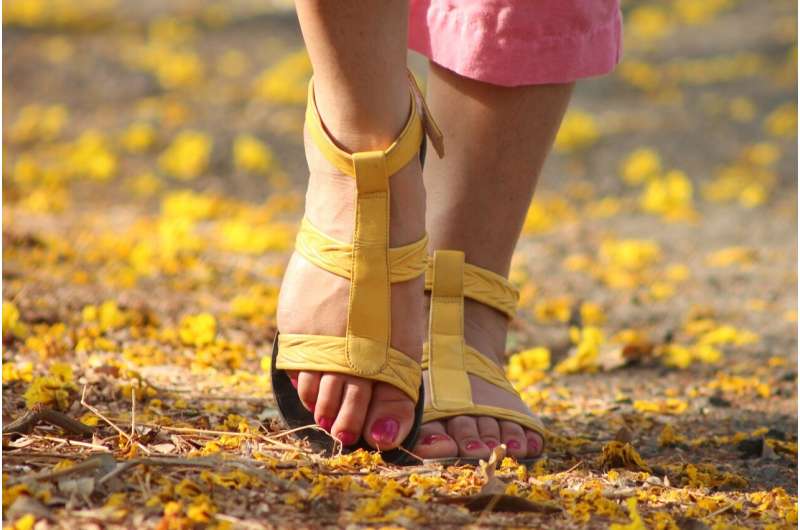Mayo Clinic Q and A: Putting your best foot forward with diabetes

DEAR MAYO CLINIC: I recently was diagnosed with diabetes and am learning about various components of my health care that require special attention. For instance, I was told I’d need to take special care of my feet. Can you explain why foot care is so important and what is necessary? Do I need to see a special type of doctor?
ANSWER: You’re among the millions of people in the U.S. who have been diagnosed with diabetes. Managing your medications, adapting your diet and incorporating activity into your lifestyle are important for managing this disease. Foot care also plays a big part in maintaining your health.
Two complications of diabetes are nerve damage and restricted blood flow to the legs and feet. Both increase the risk of various foot complications. Nerve damage decreases the feeling in your feet, a condition called peripheral neuropathy. Reduced blood flow to the feet makes it harder to heal an injury or resist infection. Left untreated, even minor cuts and blisters can become serious infections that ultimately may require toe, foot or leg amputation.
This is why it’s important to have a podiatrist on your care team. Podiatrists are doctors who specialize in conditions of the foot and ankle, including complications related to diabetes. Working closely with your podiatrist can reduce the risk of developing foot, ankle and leg issues, such as neuropathic ulcers, infections, nerve and bone damage, Charcot neuroarthropathy (joint damage)—and even amputations. Studies have shown that patients with a diabetic foot ulcer who have a podiatrist on their team can reduce amputations by 36%.
If you don’t have any diabetes-related foot and ankle complications, it’s still recommended that you see your podiatrist every year.
During this visit, your podiatrist will help you put your best foot forward by:
- Performing a comprehensive foot evaluation.
- Testing for diabetic peripheral neuropathy.
- Discussing preventive measures, such as foot care and diabetic shoes and inserts.
You should see your podiatrist at least every six months if you’ve been diagnosed with peripheral neuropathy or have a personal history of diabetes-related complications.
In addition to examinations by a health care professional, developing a daily at-home foot care routine is an important aspect of managing foot health.
This four-step routine can minimize serious infections and injuries:
1. Pick a time of day
Picking a specific time of day can help you form a routine. Try taking a few minutes when you get home from work or before going to bed to examine your feet.
2. Begin with your socks
People with peripheral neuropathy may not feel an injury when it takes place. When you take off your socks, look for any signs of infection or injury, such as dried blood or yellowish-brown drainage. Speaking of socks, wear clean ones every day. Also, you may want to check out socks designed especially for people with diabetes. They have extra cushioning, no elastic at the top and the fabric wicks away moisture.
3. Examine your feet
Next, examine your feet, including the tops and bottoms, and your toes. If you aren’t able to see the bottoms of your feet ask a family member, friend or caregiver to help or use a long-handled mirror. Look for any cuts, scratches, ulcers, blisters, dryness, redness, warmth, swelling or pain. Also, check your toenails for any discoloration, thickness or ingrown borders. If you’ve developed callouses or corns, don’t try to remove or treat them yourself. When it comes to foot issues, make an appointment with your podiatrist to discuss diagnoses and treatment.
4. Wash your feet
To reduce the chance of infections, wash your feet with a soft cloth, warm water—about the temperature you’d use to bathe a newborn baby—and soap. Be sure to dry them thoroughly when finished. It’s OK to moisturize your feet to keep dry skin from itching or cracking. But don’t moisturize between the toes, which could encourage a fungal infection.
Here are a few other things to keep in mind:
- Cut your nails straight across but not too short, which might result in an ingrown toenail.
- Don’t go barefoot, even around the house. Wear shoes or slippers to avoid cuts or scratches.
- Shake your shoes out before putting them on. Your feet may not be able to feel a pebble or other object, which could end up injuring your foot.
Source: Read Full Article
